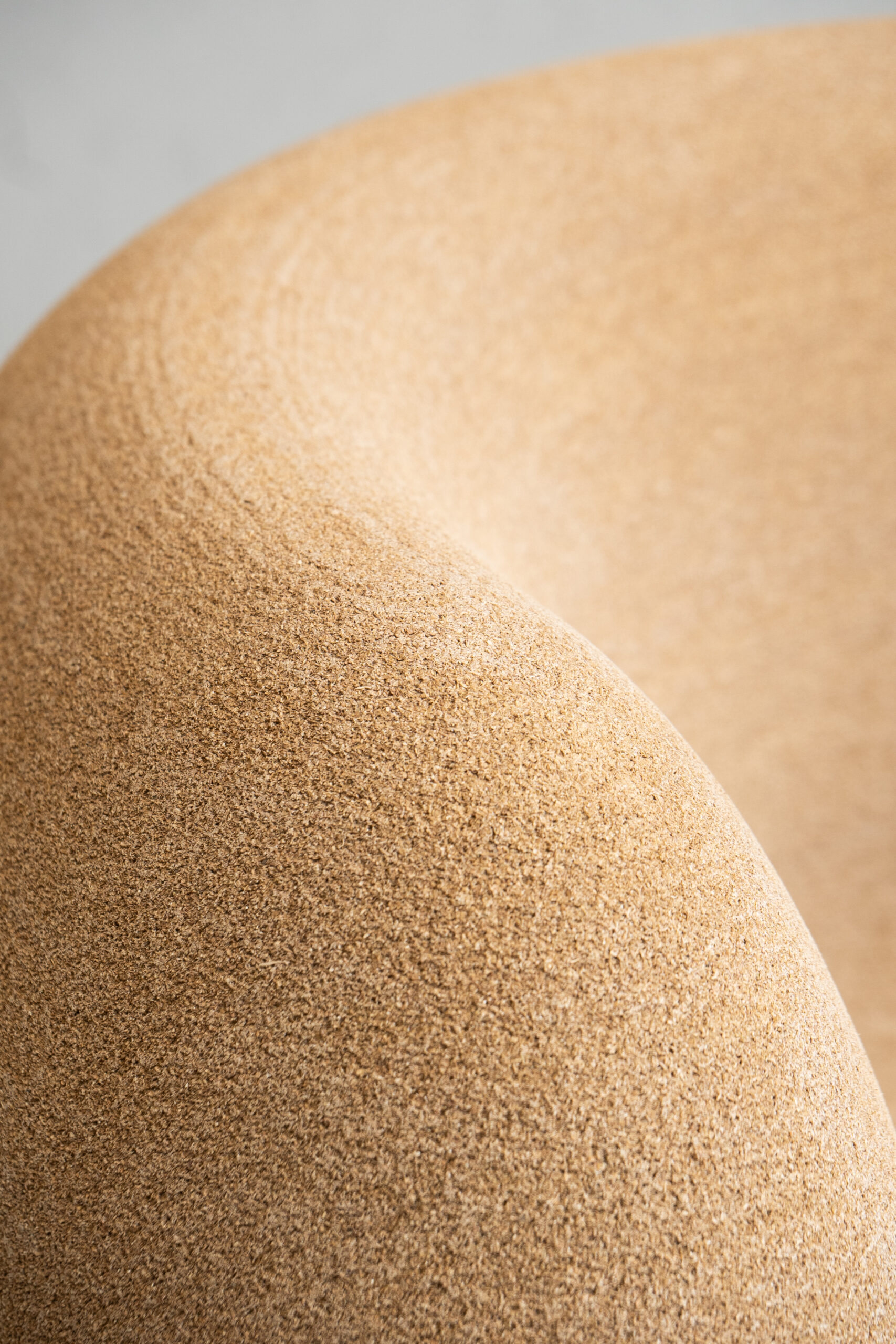

Guide
econitWood redefines material innovation by re-purposing wood leftovers from sawmills and timber harvesting for interior architecture. This novel material system emphasises ecological responsibility, regional sourcing, and fire safety while interfacing with contemporary and digital design languages.
By employing 3D printing technology, the material is turned into meticulously defined geometric shapes. This technique represents a significant advancement in sustainable design, preserving the wood's inherent CO2 absorption capacity and broadening its functional and aesthetic possibilities.
A key advantage of econitWood - technology lies in its zero-waste philosophy. In contrast to conventional manufacturing, which often leads to significant material wastage, this approach ensures the effective use of every particle of raw material without the generation of waste.
econitWood elements are made-to-order, eliminating unnecessary inventory and minimizing the environmental footprint often associated with mass production. This crafting process is a synthesis of freedom and precision, enabling the creation of intricate designs that would be hard to achieve with traditional woodworking
methods.
BENEFITS
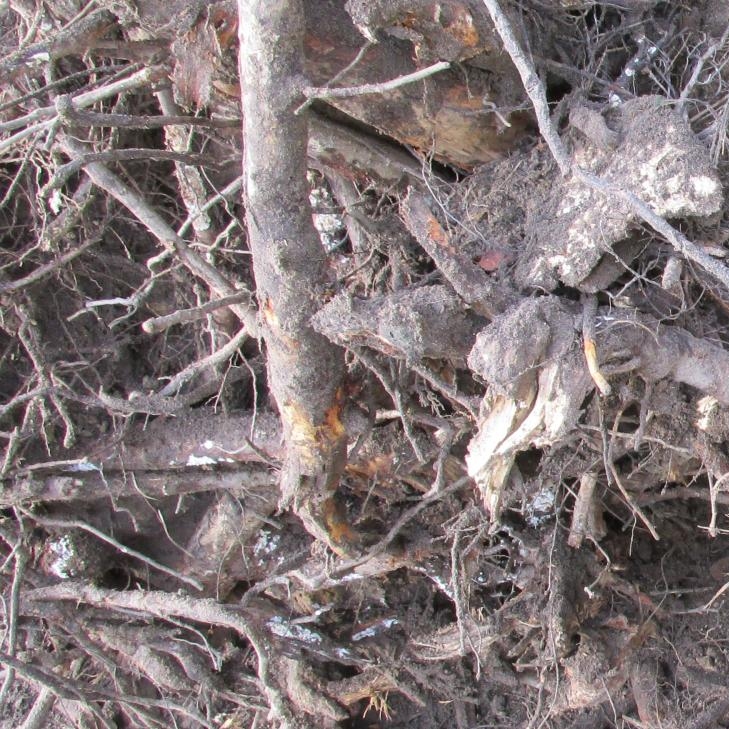
• Residual Biomass Materials
• Use of Material Only Where Needed
• 0-Waste Production
• Design Freedom and Individualization
• No Formwork Necessary
• Geometric Integration of Functions
• Lightweight Material
• Digital Design-to-Production Pipeline
• Structural Robustness
• Fire Resistance
• Acoustic Performance
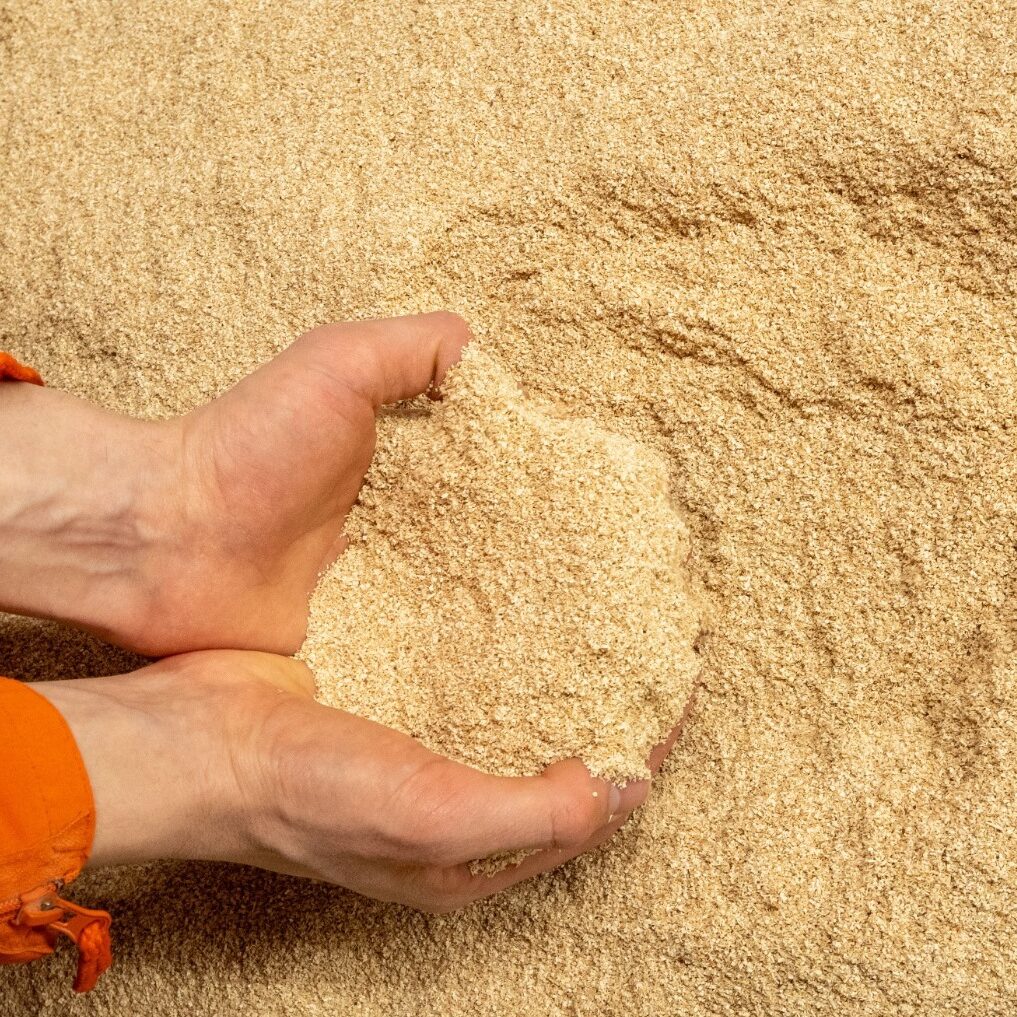
Our aggregate of choice for producing standard parts in econitWood is recycled beech wood chips. For this material, we use residual wood particles that normally cannot be used in industrial fabrication. Our innovative printing process allows to extent the life of this material in a unique way.

MATERIAL DATA SHEET
Mechanical Properties:
• Density: 900 kg/m³
• Compressive strength: > 16 MPa (test parameters based on DIN EN 196-1)
• Flexural strength: > 7 MPa (test parameters based on DIN EN 196-1)
Burning Behavior:
• Preliminary Classification: B-s1,d0 according to DIN EN 13501
• Result of Single-Burning-Item-Test (DIN EN 13823): A2-s1,d0
• Please reach out if higher requirements are necessary for your project.


Figure 1 Recordings before, during and after SBI-Test DIN EN 13823 on econitWood Panels
Acoustic Properties:
• Sound absorption of elements with 30 mm thickness: 20-35% in the range of 500-2000 Hz
• Higher absorption levels possible with thicker components
• Customer-Specific diffuser geometries possible
Sustainability of the Raw Wood Material:
• "Forest Stewardship Council®" (FSC) - Certified
• PEFC-certified wood also available upon request (Program for the Endorsement of Forest Certification)
• Sourced from European forests. Free from pollutants
Further Aspects of econitWood:
• Purely minerally bound: Contains no plastics or organic resins. Solvent-free.
Ingredients:
• Untreated beech wood from sustainable managed European forests.
• Minerally bound on magnesium-basis with approval to be used in animal feed.
MACHINE CAPACITY

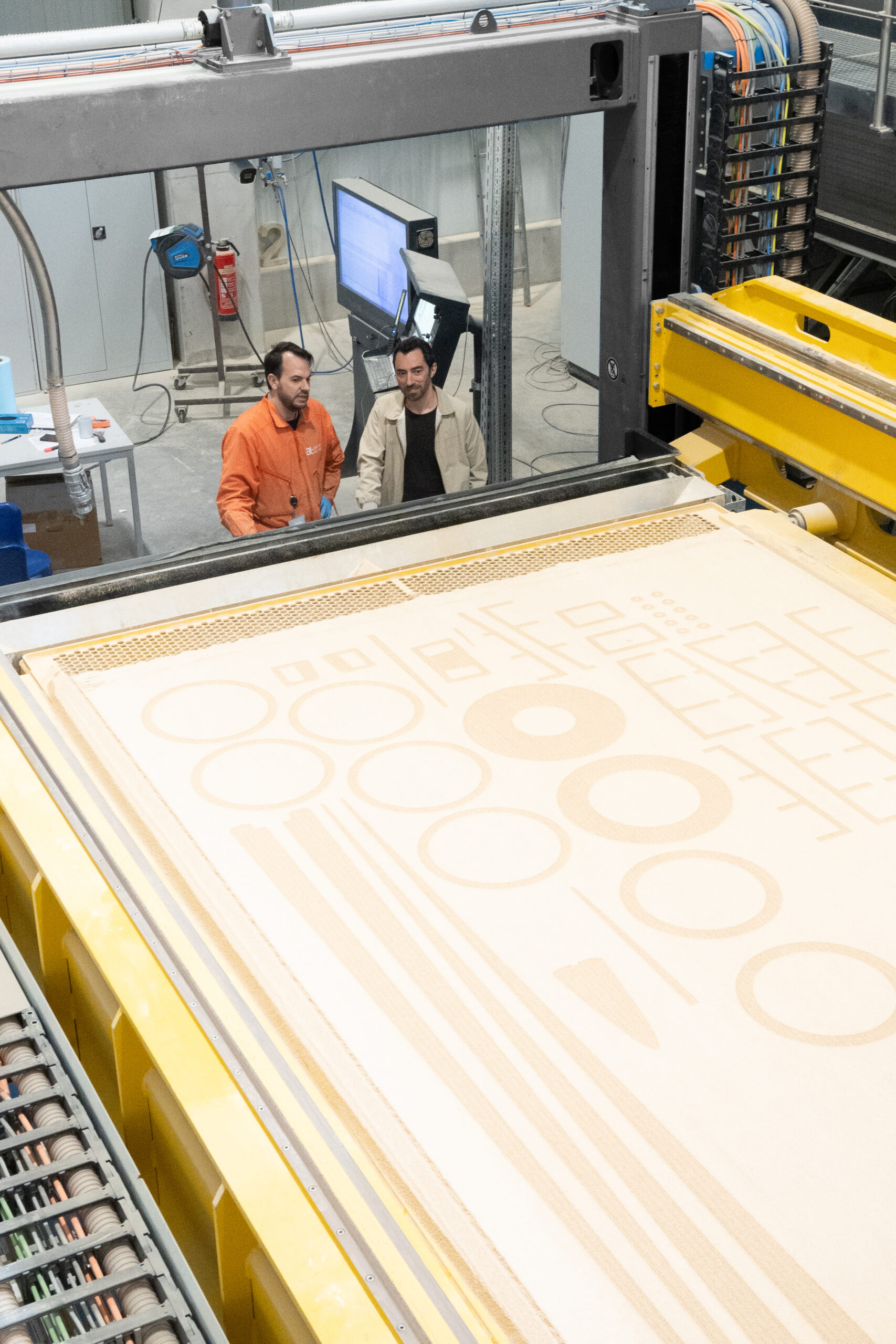
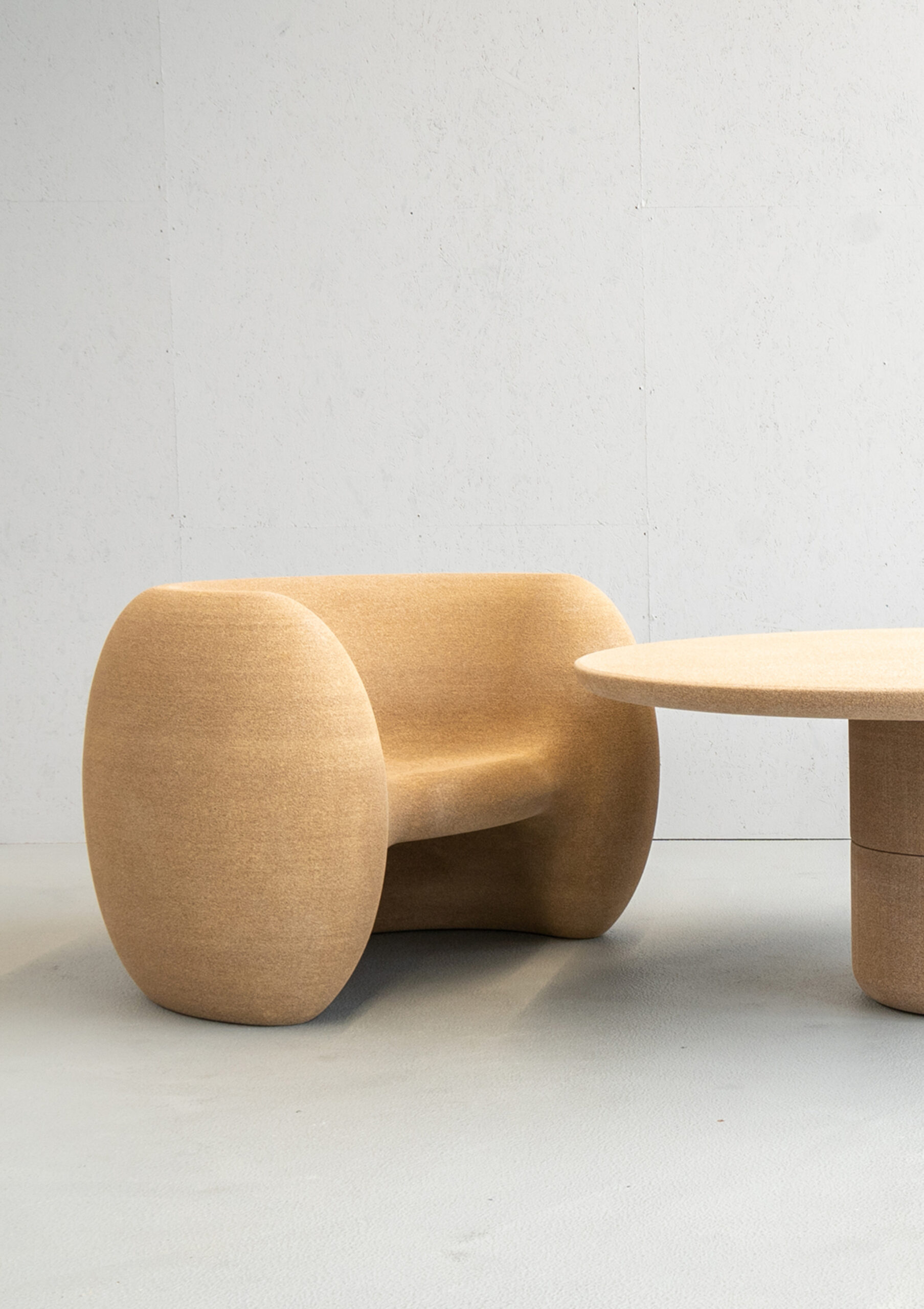
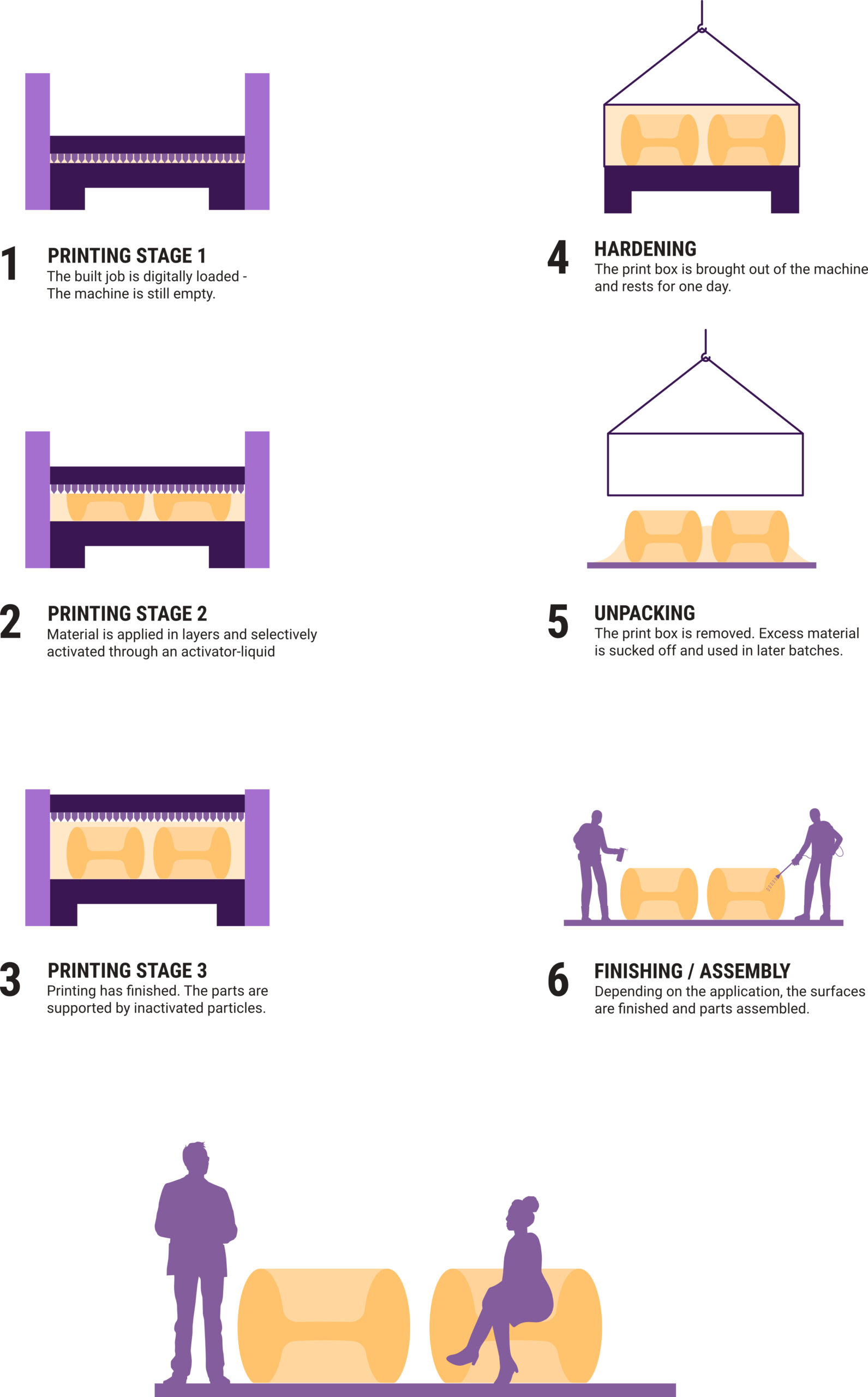
DESIGN FEATURES

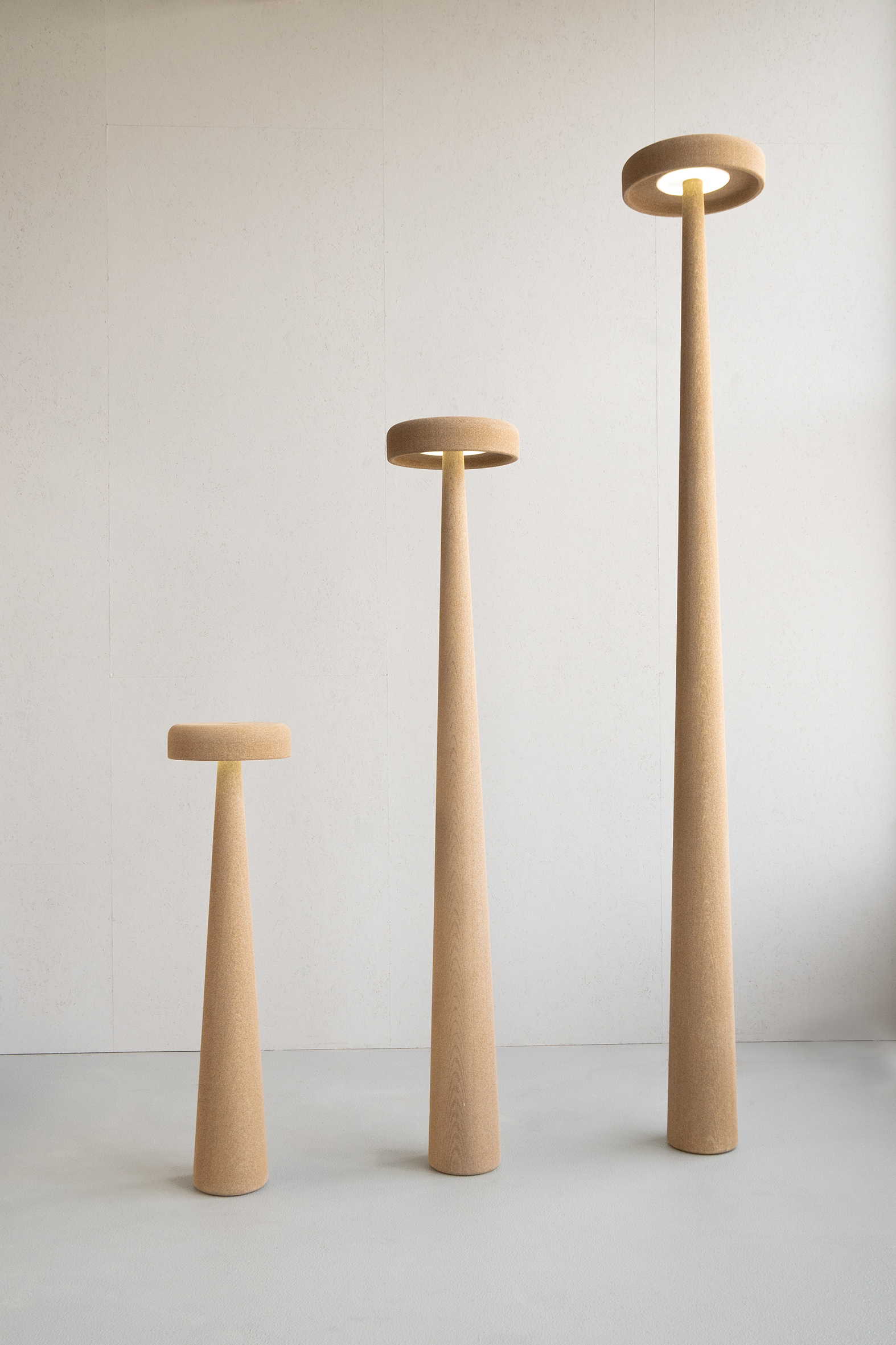
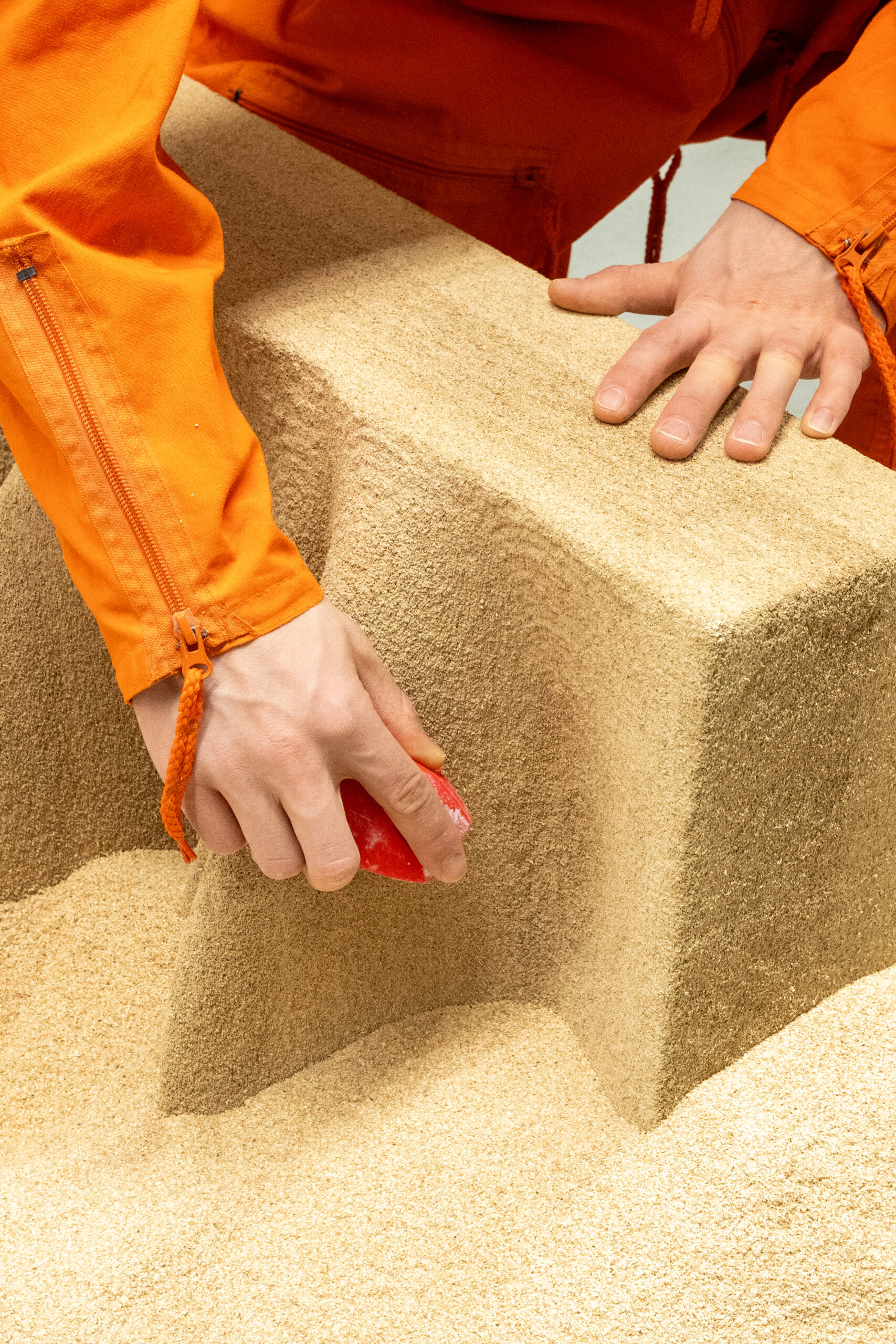

SURFACE POSTTREATMENT
econitWood parts are compatible with most wood surface finishing techniques. This versatility allows for the application of various finishes to meet specific aesthetic or durability requirements.
Sanding, Grinding, and Cutting: These fundamental wood processing techniques are fully applicable to econitWood. These processes smooth, shape, and prepare the wood for further treatments or for integration into larger constructions.
CNC Machining: Computer Numerical Control (CNC) machining offers precise and customizable shaping of econitWood parts. This method is ideal for creating detailed and complex designs, especially where high accuracy and repeat-ability are essential.
Coloring: Various coloring techniques can be applied, including staining, painting, and lacquering.
Staining allows the natural grain of the wood to show through while adding color, painting provides a solid color finish, and lacquering adds a protective, glossy layer to the surface of the wood.
Coating for Outdoor Usage: We offer a specialized mineral coating that enhances the durability of econitWood parts for outdoor use. This coating protects against weather elements and UV exposure,
ensuring longevity.
DESIGN FEATURES
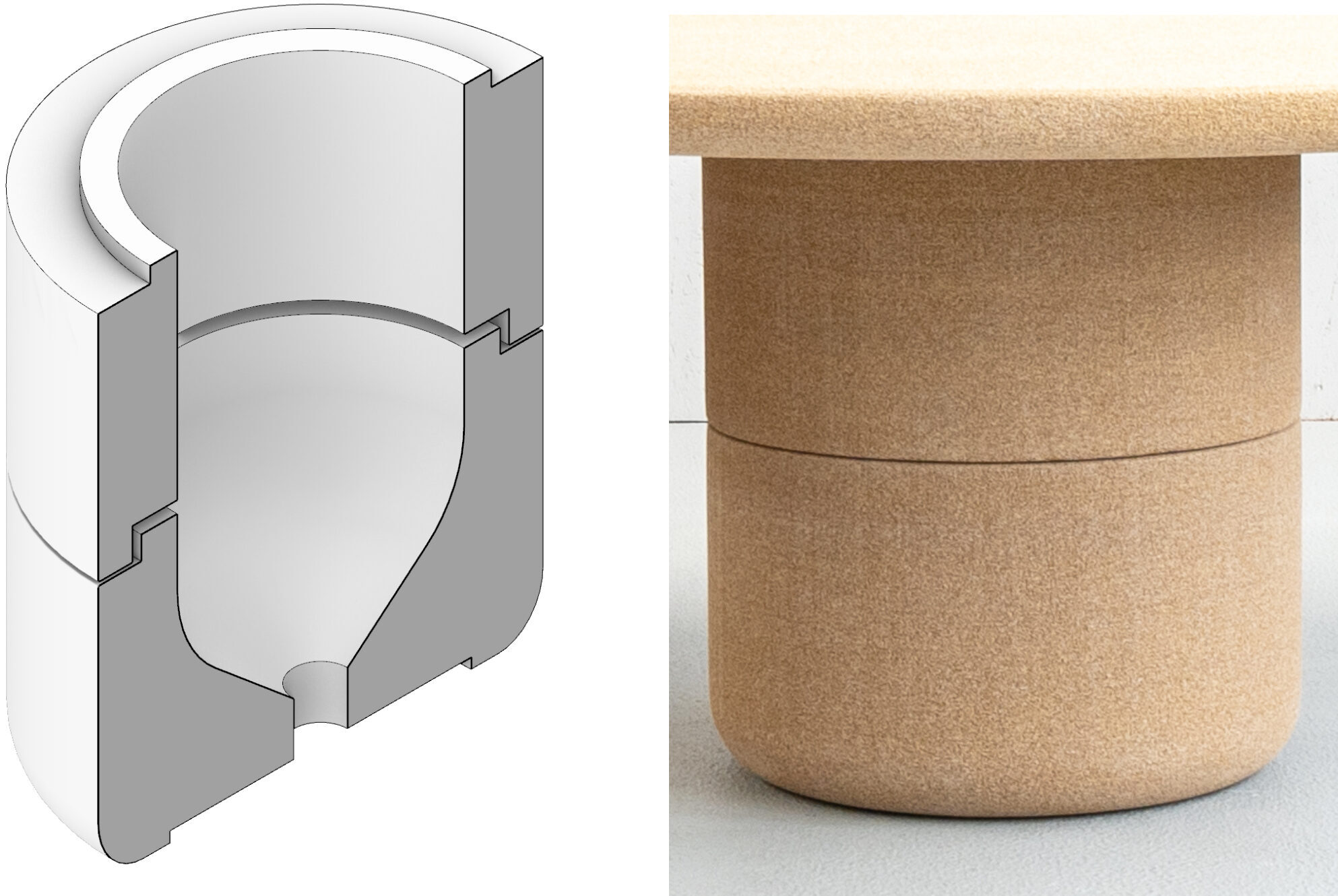
GEOMETRIC
Geometric connections, or interlocking joints, are created when the components of econitWood fit together in such a way that lateral movement is prevented, enhancing stability and structural integrity. For example, consider a lid fitting onto a pot; the edges of both the lid and the pot interlock, preventing the lid from sliding off sideways. This concept of geometric connections is utilized in econitWood designs to ensure secure fittings that are easy to assemble and disassemble. Through our additive process, a lot of interlocking geometries become possible. Reach out for guidance on how to design these joints.

MECHANICAL
econitWood can accommodate a variety of mechanical connections, similar to those used with materials like drywall. The flexibility in choosing different mechanical fasteners, such as wood screws, allows for strong and durable assembly of parts. It's recommended to use stainless steel screws when working with econitWood to prevent corrosion and ensure long-term stability. These mechanical connections are ideal for applications where additional strength is needed, and they offer versatility in how parts can be joined and secured.
ADHESIVE
For applications requiring adhesive connections, it's important to choose the right products to achieve optimal bonding strength and durability. Because econitWood has specific properties, not all adhesives may be suitable. We provide guidance and recommendations on selecting the appropriate adhesives to ensure that your connections are secure, lasting, and tailored to the environmental conditions of your project. Contact us for detailed advice and options to suit your specific needs in using econitWood effectively. Please bare in mind to design for disassembly and recyclability.
APPLICATIONS
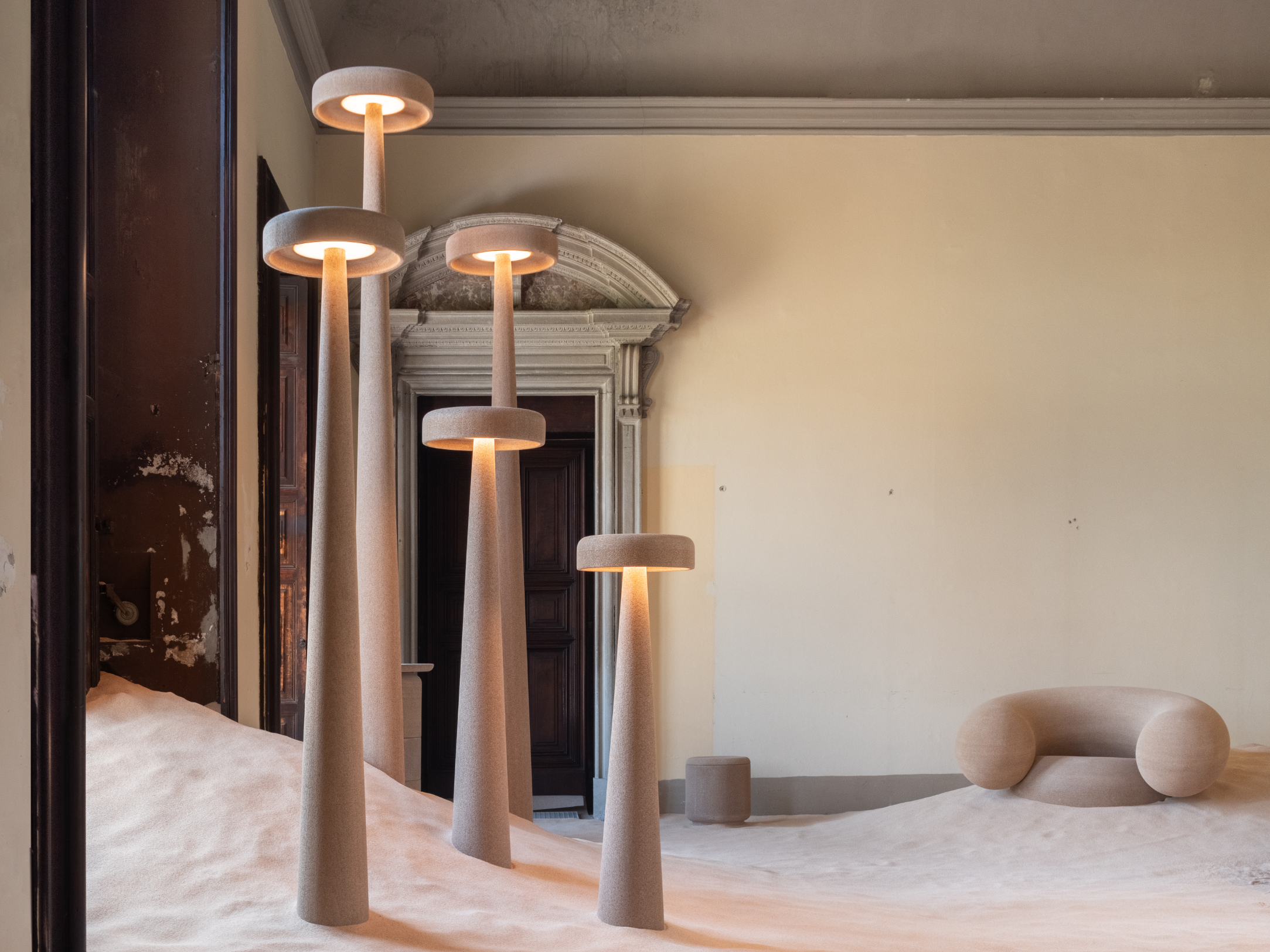
LAMPS
econitWood offers exciting possibilities for designing lamps, with the added advantage of parametric design capabilities. This technology enables designers to manipulate and fine-tune various parameters to create unique, custom lighting solutions. Whether crafting intricate, sculptural table lamps or large, ambient lighting fixtures, econitWood™ can be shaped and sized according to specific design requirements. The material's adaptability allows for creative explorations in both form and function, resulting in lamps that are not only aesthetically pleasing but also tailored to the lighting needs of any space.
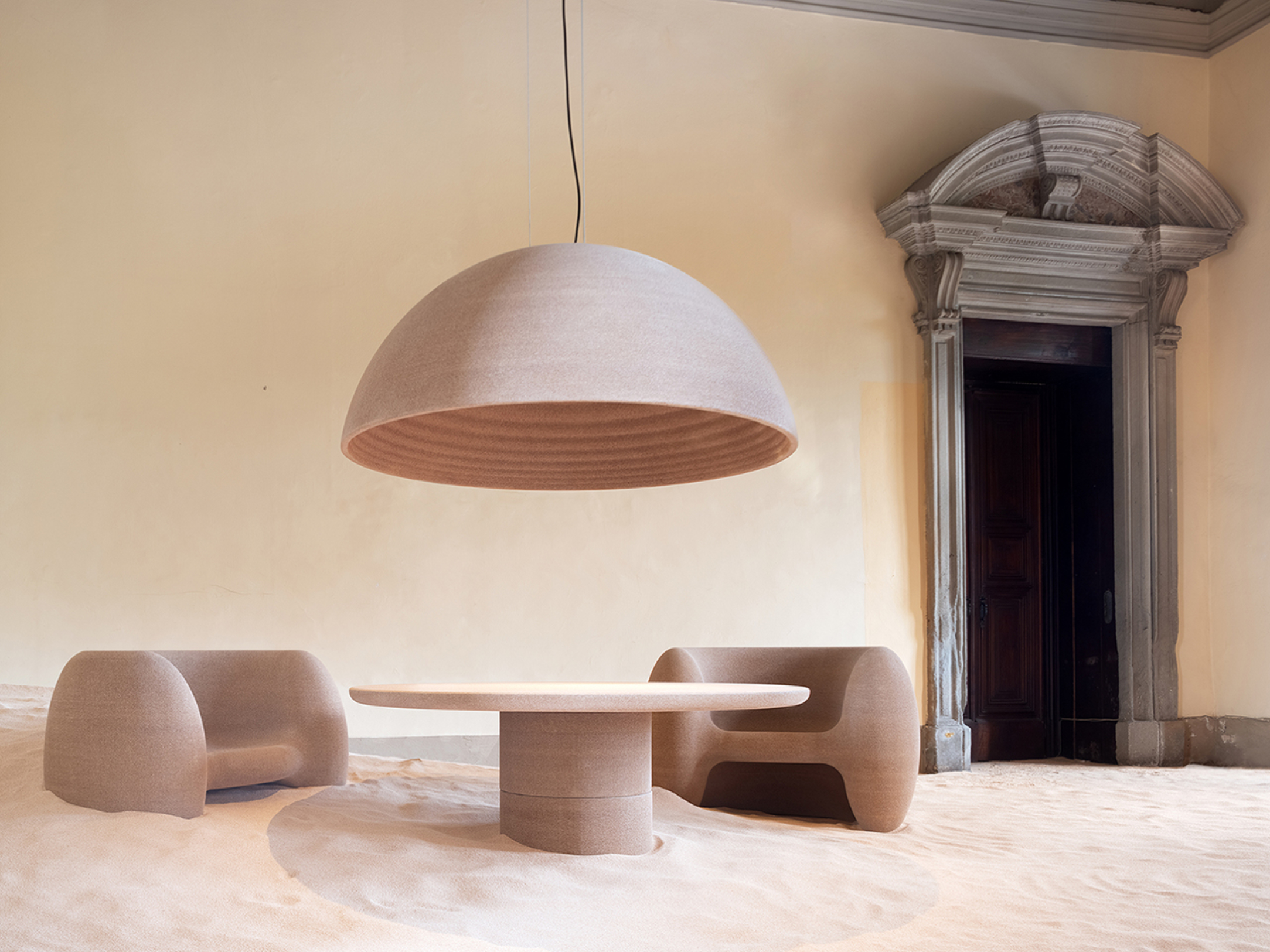
FURNITURE
The material itself lends a naturally pleasing tactile experience, enhancing the sensory value of the furniture. This makes econitWood ideal for creating comfortable, inviting pieces that feel as good as they look. Whether for minimalist or more complex furniture, econitWood offers a versatile foundation that allows designers to innovate while also adhering to principles of sustainability and efficiency in material use. This capability to create durable, lightweight, and aesthetically pleasing furniture is positioning econitWood as an excellent choice for environmentally conscious design in multiple languages.
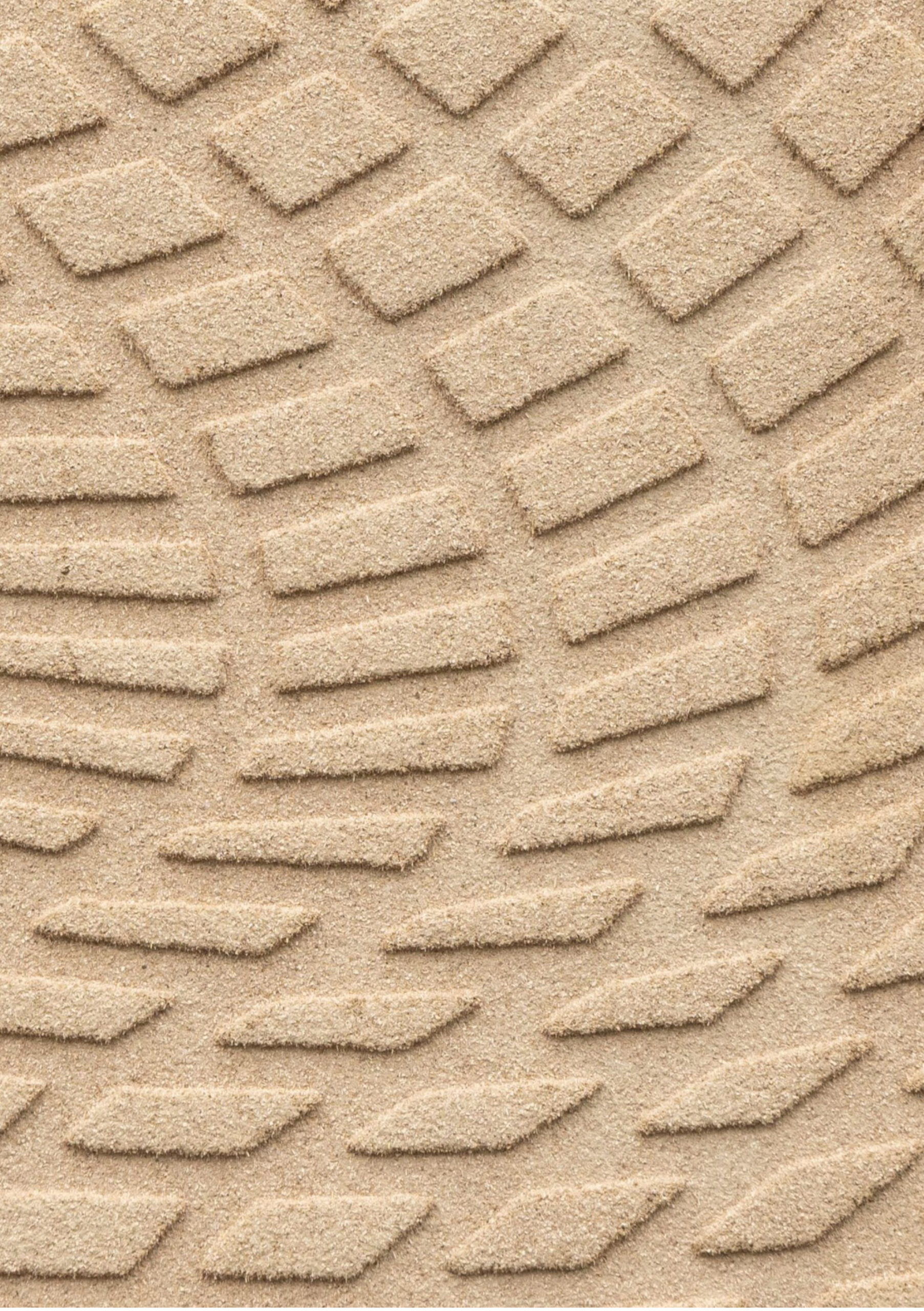
ACOUSTICS
econitWood is exceptionally well-suited for the creation of acoustic elements, panels, and objects, where its ability to be molded into complex geometric shapes plays a crucial role in influencing sound dynamics within a space. The unique geometrical configurations possible with econitWood allow for the design of surfaces that can effectively manipulate sound waves—absorbing, diffusing, or redirecting them. This capability is pivotal in enhancing the acoustic performance of various environments, from concert halls and theaters to office spaces and residential areas.
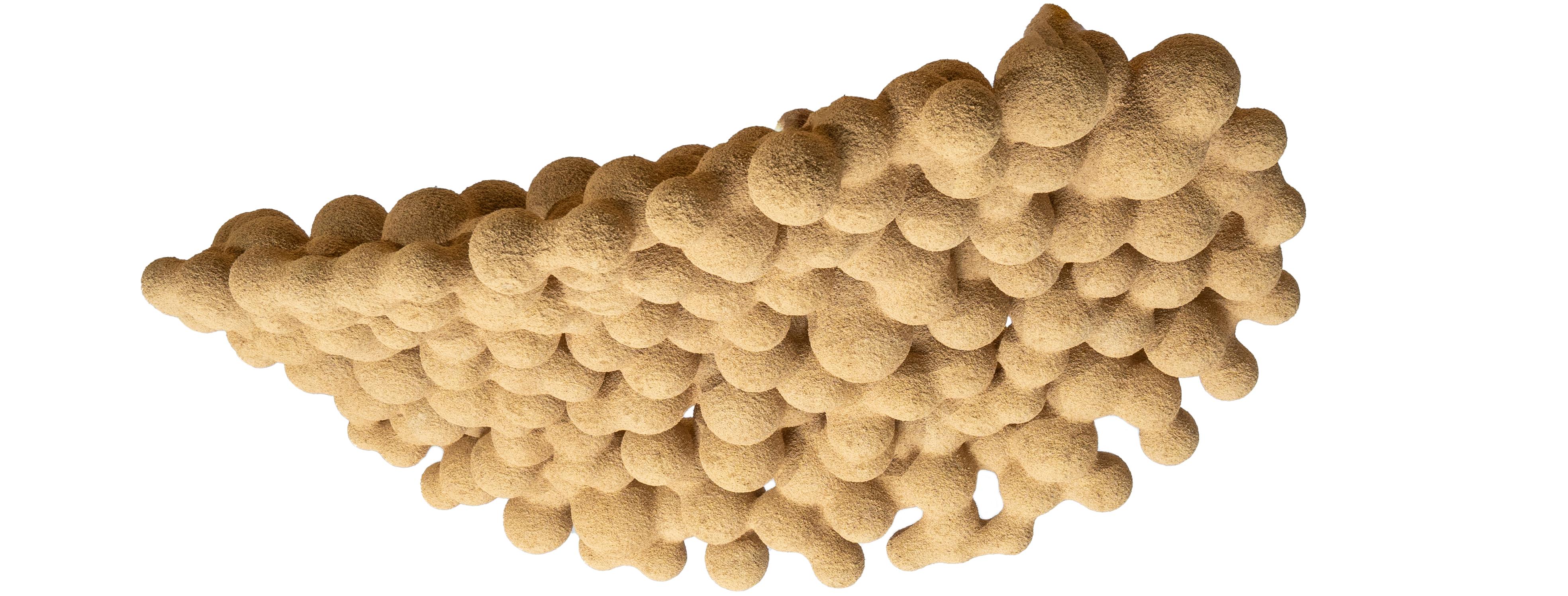
CLADDING / FLOORING
econitWood excels in flooring and cladding applications not only due to its excellent flammability rating, enhancing safety in both residential and commercial settings, but also because of its superior acoustic properties and impact toughness. It ensures durability against daily wear and tear, maintaining its integrity and appearance over time. Moreover, the geometric freedom of econitWood™ allows it to meet complex spatial requirements, effortlessly fitting intricate floor patterns or adapting to unique wall contours.
FUTURE PROSPECTS AND TRENDS
Materials
At econitWood™, we are actively exploring the future of sustainable materials by developing and enhancing our binder systems and experimenting with various bio-material sources derived from waste. Our research focuses on creating products suitable for direct outdoor application and load-bearing structures, aiming to expand the potential uses of our innovative materials in more demanding environments. We are committed to pushing the boundaries of what's possible in sustainable construction and design. If you are interested in collaboration or have ideas that align with our goals, we encourage you to get in touch with us. Together, we can drive the evolution of sustainable materials and transform the way we build and design for a more sustainable future.
Manufacturing Process
We've structured our manufacturing around an industrial-grade process that is continually being refined to increase speed, enhance efficiency, and reduce costs. Our commitment extends to the automation of complex production steps, ensuring a streamlined transformation from digital designs to tangible products. Our fully digital pipeline leverages state-of-the-art manufacturing technologies and sophisticated software, allowing for meticulous oversight of the production process. This approach not only boosts our production capabilities but also aligns with our dedication to providing superior, sustainable products in a cost-effective manner. As we evolve, our focus remains on technological advancements to better serve the dynamic needs of the construction and design industries.
Future possibilities and potential
We believe that we are at the forefront of bio-digital fabrication, a transformative approach poised to redefine tomorrow's environments. By merging biological materials with cutting-edge digital technologies, we are setting new standards for sustainable architecture and design. Collaborating with us means making a meaningful impact on this innovative path - shaping a future where technology harmonizes with nature.

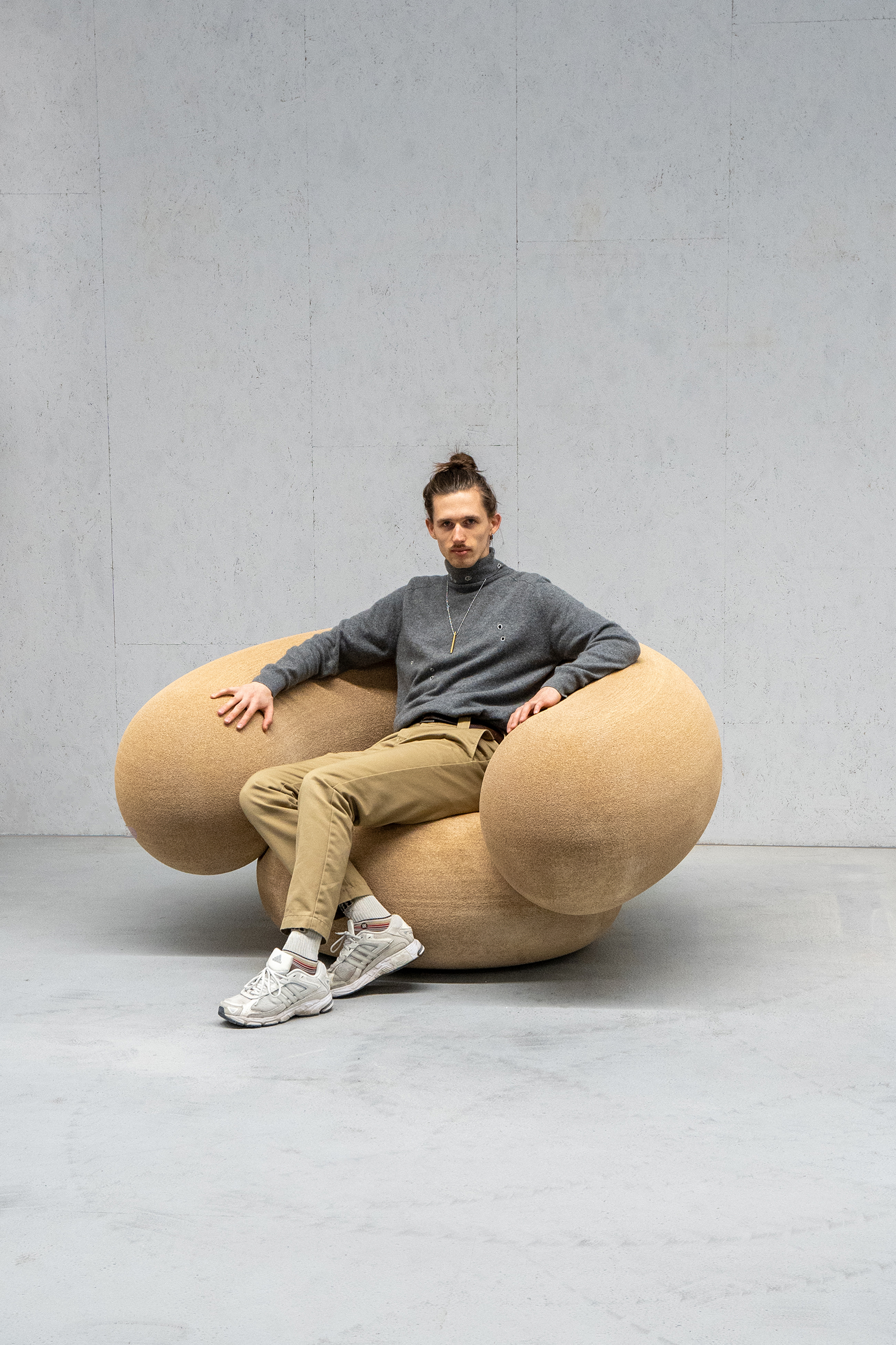
SUMMARY
Trust
The adoption of new manufacturing techniques, like those used in econitWood™ production, demands a readiness to embrace risk and have confidence in technological advancements. For products crafted from materials such as ours, the balance between cost, functionality, material quality, and an understanding of potential hurdles is essential. With our advanced manufacturing processes, we enable a risk-free evaluation of functionality and cost efficiency. However, the challenge often lies in the material itself, particularly concerning its long-term performance and regulatory approvals.
To foster trust in our technologies and materials and to ensure rapid and successful outcomes, we engage in ongoing dialogue with Original Equipment Manufacturers, material suppliers and designers. This collaborative approach helps us address challenges proactively and refine our processes to meet the highest standards of quality and sustainability.
Potential
The technology is mature today. Assuming that the range of materials will expand significantly, the applications are universal. Shorter lead times and freedom of geometry promise the creation of entirely new products and the opening of new markets.
Safety
A key challenge in the production of econitWood parts lies in the diverse and sometimes demanding application scenarios they are designed for. Each application can present unique risks or complexities, necessitating meticulous crafting and careful handling. The solution lies in manufacturing within a professional setting, where the operation of industrial facilities is tailored to meet a broad spectrum of requirements related to logistics, training, and quality management. This approach ensures that each piece of econitWood meets the highest standards of quality and safety and perfectly suits to its intended use, regardless of the challenges it might face in its environment.
Cost
Currently, it's feasible to produce parts in series quality. However, for larger parts, the material usage significantly increases and production times per unit extend because fewer parts fit in each build job. Many customers still associate additive manufacturing mainly with prototyping, so it's crucial to gradually educate about the true potential for mass production. As more applications emerge, they will incrementally increase material consumption, which will, in turn, favorably impact material costs over time.
